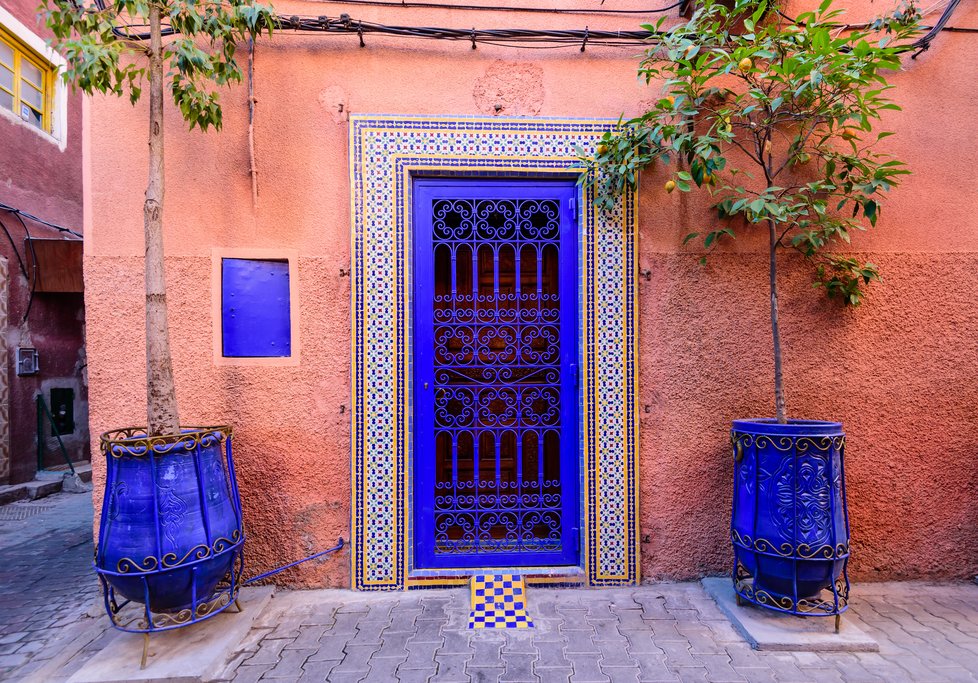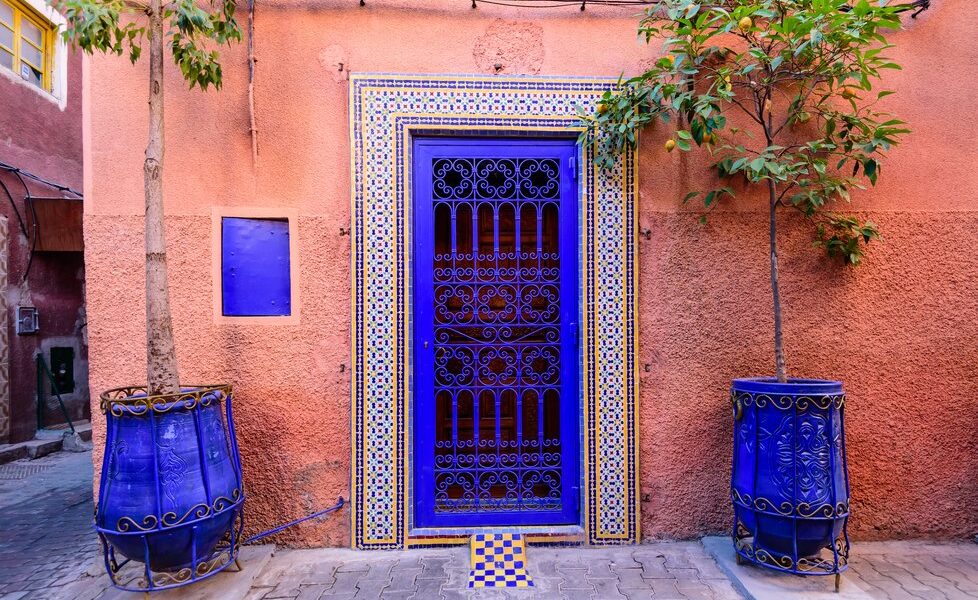
Marrakesh is Morocco’s fourth-largest city and one of the country’s major tourist spots. To see it, ideally, you’ll want to allocate at least two to three days, although those with less time to spare can still enjoy the experience. Travelers who choose to stay for longer will have the opportunity to get to know the city and see it at a more relaxed pace. Read on for advice on how long to stay in Marrakesh.
## Embarking on Your Marrakesh Adventure: A Comprehensive Guide
For travelers meticulously planning a Moroccan vacation, the vibrant city of Marrakesh stands as an unmissable jewel. Its allure is multifaceted, drawing visitors for diverse experiences. Some elect to immerse themselves in its captivating atmosphere for a condensed city break, soaking in the sights and sounds over a few unforgettable days. Others, yearning for a more expansive exploration of Morocco’s urban landscapes, choose to seamlessly integrate Marrakesh into a more extensive city tour, venturing to the historically rich and culturally significant destinations of Rabat, the intellectual heart of Fes, and the bustling metropolis of Casablanca. This comprehensive itinerary offers a captivating journey through the diverse facets of Moroccan city life. Alternatively, Marrakesh can serve as the perfect springboard for venturing into the breathtaking natural wonders that lie beyond the city limits. Many adventurers utilize Marrakesh as a strategic base from which to launch expeditions into the majestic Atlas mountains, with their soaring peaks and panoramic vistas, and the mesmerizing expanse of the Sahara Desert, where endless dunes meet the horizon in a breathtaking display of nature’s artistry. This approach allows for a captivating blend of urban exploration and immersion in Morocco’s stunning natural landscapes.
When preparing your luggage for your Moroccan escapade, thoughtful consideration should be given to respecting the local customs and traditions. Conservative attire is highly recommended as a sign of respect for the cultural norms: long pants and long-sleeved shirts are invariably a prudent choice, particularly when visiting religious sites or more traditional neighborhoods. Furthermore, navigating the intricate labyrinthine alleyways of the country’s ancient medinas (historic city centers) can be a challenging endeavor, often characterized by bustling crowds and uneven surfaces. To ensure comfort and ease of exploration, opting for sneakers or comfortable sandals is a wise decision. In addition to cultural sensitivity, Morocco’s diverse landscapes present a myriad of opportunities for engaging in exhilarating outdoor activities, most notably hiking. For those planning to explore the rugged terrain of the Atlas Mountains or embark on treks through the desert landscapes, packing appropriate outdoor gear is an absolute necessity. Sturdy hiking boots, moisture-wicking clothing, and sun protection are essential items to ensure a safe and enjoyable experience in Morocco’s great outdoors.
To gain a deeper understanding of Morocco’s cultural nuances, geographical diversity, and climatic conditions, and to set realistic expectations for your journey, it’s highly recommended to consult informative guides. These resources offer valuable insights into various aspects of the Moroccan experience. Comprehensive guides covering the Best Time to Visit Morocco provide invaluable information on seasonal variations and optimal periods for travel. Guides to the Highlights of Morocco showcase the country’s most iconic landmarks and cultural attractions, ensuring you don’t miss any must-see destinations. Lastly, guides detailing the Main Regions of Morocco offer a valuable overview of the country’s geographical diversity and the distinct characteristics of each region, enabling you to tailor your itinerary to your specific interests and preferences.
## Marrakesh in a Single Day: A Whirlwind Adventure
If your exploration of Marrakesh is but a fleeting chapter within a larger Moroccan saga, perhaps as part of a carefully curated itinerary that allows for a limited timeframe, such as this itinerary, fear not. Even with just a single day or two to immerse yourself in the city’s vibrant tapestry, you can still capture the essence of Marrakesh and forge lasting memories. The key lies in meticulous planning and prioritizing the experiences that resonate most deeply with your interests.
Begin your Marrakesh immersion in the heart of the medina, where the pulsating epicenter of activity resides: Jemaa el-Fna square. This bustling public space undergoes a remarkable transformation throughout the day. In the morning, it serves as a marketplace, teeming with small shops and itinerant hawkers peddling their wares. However, as the sun dips below the horizon, Jemaa el-Fna truly comes alive, morphing into a vibrant spectacle of food vendors, captivating storytellers, mesmerizing musicians, and a kaleidoscope of street performers. The square’s dynamic atmosphere makes it a captivating destination to visit multiple times throughout the day, witnessing its contrasting personalities and ever-evolving ambiance. After soaking in the atmosphere of Jemaa el-Fna, venture southwest to the iconic Koutoubia Mosque—the largest and most prominent mosque in Marrakesh, serving as an architectural landmark and a symbol of the city’s rich Islamic heritage. While non-Muslims are respectfully restricted from entering the mosque itself, its imposing 250-foot minaret tower is a sight to behold, piercing the sky and offering breathtaking panoramic views of the surrounding cityscape. Moreover, visitors can leisurely stroll through the mosque’s serene rose garden, a tranquil oasis of beauty and tranquility amidst the bustling city.
North of Jemaa el-Fna lies a sprawling network of interconnected souks (traditional open-air markets), a sensory overload of colors, aromas, and sounds. Those with a penchant for shopping will find themselves in a veritable paradise, with an abundance of carpets, spices, argan oil, colorful fabrics, traditional clothing, and a bewildering array of other goods vying for attention. Haggling is not only accepted but expected, and it is an integral part of the souk experience. Engage in friendly banter with the vendors, hone your negotiation skills, and prepare to unearth hidden treasures at irresistible prices. However, if shopping is not your forte, you can bypass the souks and instead head south towards the area surrounding the kasbah (citadel), a historical fortress that houses a wealth of cultural and architectural attractions. Here, you’ll discover the opulent 19th-century Bahia Palace, a masterpiece of Moroccan architecture showcasing intricate tilework, lush courtyards, and exquisitely adorned chambers. Nearby, the ruins of the 16th-century El Badii Palace evoke a sense of grandeur and historical significance, offering a glimpse into the city’s past. Finally, the Saadian Tombs, a hidden necropolis containing the remains of Saadian dynasty rulers, offer a somber yet captivating experience. However, be forewarned that long queues are often encountered at the entrance to the tombs, so plan accordingly.
As the day draws to a close, reward yourself with a delectable dinner. Be sure to savor the authentic flavors of Moroccan cuisine: couscous, lamb, and tajine. From humble street stalls to upscale restaurants, the medina is sure to offer something to suit all tastes and budgets.
## Marrakesh in 2-3 Days: A Deeper Dive
With an additional day or two to dedicate to Marrakesh, you can afford to explore the medina at a more relaxed pace or venture beyond its ancient walls and dedicate some time to the new city.
Beyond the souks and palaces, the medina is also home to a number of interesting museums. Those looking to learn more about Moroccan history and art can head to spots like the Musée de Marrakesh, Musée de Mouassine, or the Heritage Museum, among others. Many museums are housed in colorfully-tiled former palaces or riads (traditional stately homes), making them a feast for the senses.
Alternatively, use your second or third day for a visit to the new city (“Ville Nouvelle”) and Majorelle Garden. Created by French artist Jacques Majorelle over several decades at the turn of the 20th century, the garden is known for its collection of exotic plants arranged around photogenic tiled fountains and deep-blue buildings. It’s located to the north of the old city, adjacent to the Yves Saint Laurent Museum.
## Marrakesh in 4-5 Days: Leisurely Exploration and Cultural Immersion
A 4-5 day trip to Marrakesh will allow you to spread out your sightseeing, spending longer at each attraction with ample time for breaks. One must-do is stopping at a café or street vendor for a Moroccan specialty—heavily-sweetened mint tea. It’s traditional to share this tea with guests, so you may also be offered a complimentary glass at your accommodation or when shopping in the souk.
Another interesting activity to do in Marrakesh is visiting a hammam (traditional bathhouse). You’ll be bathed and given exfoliating treatments with black soap (savon noir) by an attendant. Some upscale hammams also offer massages. Note that hammams are gender-segregated; some have separate entrances, while others have specific visiting times for men and women.
If you’re keen to see more of the country, a longer trip will also leave you with enough time for a day tour. A commonplace to combine with Marrakesh is the seaside town of Essaouira, about a three-hour drive away. This historic beach spot is known for its seafood. Those eager to see Marrakesh, Essaouira, and the Atlas mountains may enjoy this five-day itinerary featuring all three.
## Marrakesh in 6 or More Days: Unveiling Hidden Gems and Regional Adventures
With six or more days at your disposal, you’ll be able to thoroughly explore Marrakesh’s center and the surrounding region, do multiple activities of your choice, and get off the beaten path in the city.
Beyond the historic district, there’s also plenty to see in Marrakesh’s newer areas. The hip neighborhood of Guéliz offers everything from broad Parisian-style boulevards to modern museums, pleasant cafés, and high-end restaurants. Guéliz is dotted with contemporary art galleries and small museums, making it a good place to spend a day or half-day to clear your head after the hustle and bustle of the medina. Another good half-day trip is the Museum of African Contemporary Art Al Maaden (MACAAL), located a 20-minute drive southeast of downtown.
If you’d like to leave the city center and get outdoors, you can check out the Four Great Hiking Regions Near Marrakesh. From gentle walks around the village of Amizmiz to the challenging ascent of Antar Summit, the area surrounding Marrakesh offers hikes suitable for all preferences and skill levels.
B-1615

